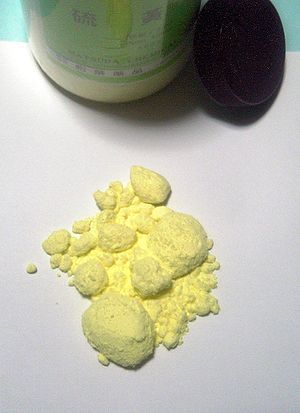|
55,000+ Life Science Reagents & Materials
Cell Biology, Drug Discovery, Molecular Biology,
Environmental Microbiology, Proteomics, Sample Preparation System, Solid Phase
Peptide Synthesis (SPPS), Plant Research, Dosimetry, Fine Chemicals, Bovine
Proteins, Row Materials, Diagnostics, Immuno Solutions.
Product Category:
Adsorbents, Antibodies & Immunoreagents, Apoptosis, Biochemicals & Reagents,
Culture Media & Reagents, Kits and Assays, Labware & Instruments, Rare &
Fine Chemicals, Proteins, Enzymes & Peptides, Radiochemicals, Research Diets,
Lab Detergents and Sanitizers, ......
Reagent
https://en.wikipedia.org/wiki/Reagent
In the field of biology, the biotechnology revolution
in the 1980s grew from the development of reagents that could be used to
identify and manipulate the chemical matter in and on cells.[2][3] These
reagents included antibodies (polyclonal and monoclonal), oligomers, all sorts of model organisms and immortalised cell
lines, reagents and methods for molecular cloning and DNA replication, and
many others.[3][4]
Tool compounds are also important reagents in biology; they are small molecules
or biochemicals like siRNA or antibodies that
are known to affect a given biomolecule—for example a drug target—but
are unlikely to be useful as drugs themselves, and are often starting points in
the drug discovery process.[5][6] Many
natural products, such as curcumin,
are hits in almost any assay in which they are tested, are not useful tool
compounds, and are classified by medicinal chemists as "pan-assay
interference compounds".[7][8][9]
|

|

|
Raw material:
https://en.wikipedia.org/wiki/Raw_material
A raw
material,
also known as a feedstock or
most correctly unprocessed
material,
is a basic material that is used to produce goods, finished products, energy, or
intermediate materials which are feedstock for future finished products. As
feedstock, the term connotes these materials are bottleneck assets and are
highly important with regard to producing other products. An example of this is crude oil,
which is a raw material and a feedstock used in the production of industrial chemicals, fuels, plastics,
and pharmaceutical goods; lumberis
a raw material used to produce a variety of products including furniture.[1] |
List of life sciences
https://en.wikipedia.org/wiki/List_of_life_sciences
The list of life sciences comprise
the branches of science that
involve the scientific study of living organisms –
such as microorganisms, plants, animals, and human beings –
as well as related considerations like bioethics. While biology remains
the centerpiece of the life sciences, technological advances
in molecular biology and biotechnology have
led to a burgeoning of specializations and interdisciplinary fields.[1][2]
Some life sciences focus on a specific type of life. For example, zoology is the
study of animals, while botany is the
study of plants. Other life sciences focus on aspects common to all or many life
forms, such as anatomy and genetics. Yet other fields
are interested in technological advances involving living things, such as bio-engineering.
Another major, though more specific, branch of life sciences involves
understanding the mind – neuroscience.
The life sciences are helpful in improving the quality and standard of life.
They have applications in health, agriculture, medicine, and the pharmaceutical
and food science industries.
There is considerable overlap between many of the topics of study in the life
sciences.
|

Simulations of the fluorescence of different fluorescent proteins. |

|
Biology and its branches
https://en.wikipedia.org/wiki/List_of_life_sciences#Biology_and_its_branches
Biology –
burst and eclectic field, composed of many branches and subdisciplines.
However, despite the broad scope of biology, there are certain general and
unifying concepts within it that govern all study and research, consolidating it
into a single, coherent field. In general, biology recognizes the cell as the
basic unit of life, genes as the basic unit of heredity, and evolution as the
engine that propels the synthesis and creation of new species. It is also
understood today that all organisms survive by consuming and transforming energy
and by regulating their internal environment to maintain a stable and vital
condition. Here are some of biology's major branches: |
- Anatomy,
Biochemistry,
Bioengineering,
Bioinformatics,
Biolinguistics,
Biomechanics,
Biomedical research,
Biophysics,
Biotechnology,
Botany,
Cell biology,
Developmental
biology, Ecology,
Entomology,
Epidemiology,
Ethology,Evolutionary biology,
Genetics,
Hematology,
Marine biology,
Microbiology,
Molecular biology,
Neuroscience,
Physiology,
Population, biology,
Sociobiology,
Structural biology,
Synthetic biology,
Systems biology,
Toxicology,
Zoology.
|
Medicine and its branches
https://en.wikipedia.org/wiki/List_of_life_sciences#Medicine_and_its_branches
Medicine –
applied science or practice of the diagnosis, treatment, and prevention of
disease. It encompasses a variety of health care practices evolved to maintain
and restore health by the prevention and treatment of illness. Some of its
branches are:
|

|
-
Anesthesiology,
Cardiology,
Critical care
medicine, Dermatology,
Emergency medicine,
Endocrinology,
Gastroenterology,
General Practice (often
called Family Medicine),
Geriatrics,
Gynecology,
Hematology,
Hepatology,
Infectious disease,
Neurology,
Nephrology,
Oncology,
Ophthalmology,
Otolaryngology,
Pathology,
Pediatrics,
Pharmacology,
Pulmonology,
Psychiatry,
Radiology,
Rheumatology,
Splanchnology,
Surgery,
Urology,
Veterinary medicine.
|
Product Category:
|